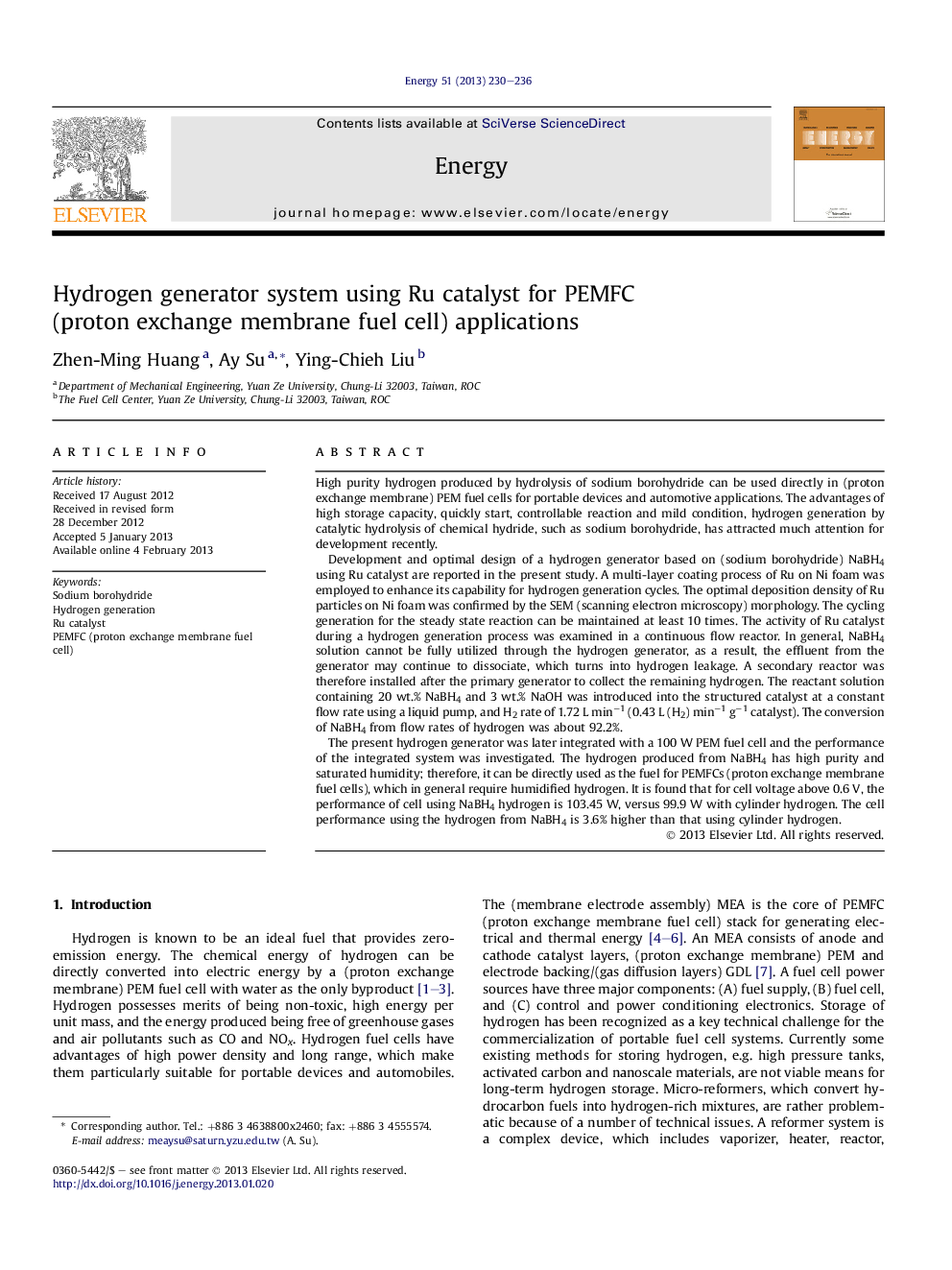| Article ID | Journal | Published Year | Pages | File Type |
|---|---|---|---|---|
| 1733175 | Energy | 2013 | 7 Pages |
High purity hydrogen produced by hydrolysis of sodium borohydride can be used directly in (proton exchange membrane) PEM fuel cells for portable devices and automotive applications. The advantages of high storage capacity, quickly start, controllable reaction and mild condition, hydrogen generation by catalytic hydrolysis of chemical hydride, such as sodium borohydride, has attracted much attention for development recently.Development and optimal design of a hydrogen generator based on (sodium borohydride) NaBH4 using Ru catalyst are reported in the present study. A multi-layer coating process of Ru on Ni foam was employed to enhance its capability for hydrogen generation cycles. The optimal deposition density of Ru particles on Ni foam was confirmed by the SEM (scanning electron microscopy) morphology. The cycling generation for the steady state reaction can be maintained at least 10 times. The activity of Ru catalyst during a hydrogen generation process was examined in a continuous flow reactor. In general, NaBH4 solution cannot be fully utilized through the hydrogen generator, as a result, the effluent from the generator may continue to dissociate, which turns into hydrogen leakage. A secondary reactor was therefore installed after the primary generator to collect the remaining hydrogen. The reactant solution containing 20 wt.% NaBH4 and 3 wt.% NaOH was introduced into the structured catalyst at a constant flow rate using a liquid pump, and H2 rate of 1.72 L min−1 (0.43 L (H2) min−1 g−1 catalyst). The conversion of NaBH4 from flow rates of hydrogen was about 92.2%.The present hydrogen generator was later integrated with a 100 W PEM fuel cell and the performance of the integrated system was investigated. The hydrogen produced from NaBH4 has high purity and saturated humidity; therefore, it can be directly used as the fuel for PEMFCs (proton exchange membrane fuel cells), which in general require humidified hydrogen. It is found that for cell voltage above 0.6 V, the performance of cell using NaBH4 hydrogen is 103.45 W, versus 99.9 W with cylinder hydrogen. The cell performance using the hydrogen from NaBH4 is 3.6% higher than that using cylinder hydrogen.
► Development and optimal design of a hydrogen generator based on (sodium borohydride) NaBH4 using Ru catalyst. ► A multi-layer coating process of Ru on Ni foam was employed to enhance its capability for hydrogen generation cycles. ► The activity of Ru catalyst during hydrogen generation process was examined in a continuous flow reactor. ► The hydrogen generator was integrated with a 100 W PEM fuel cell.
